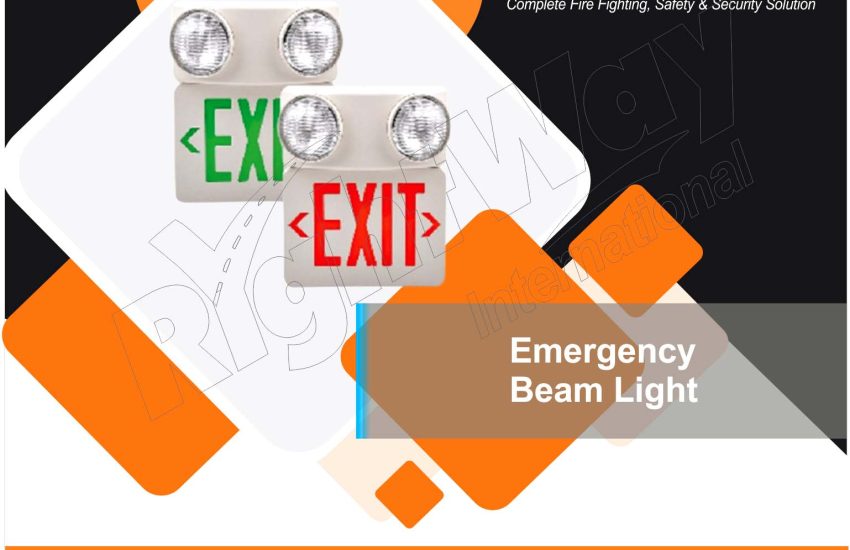Emergency Beam Light are crucial safety tools designed to provide illumination and visibility during emergencies and adverse conditions. These lights are widely used in various situations, including road emergencies, natural disasters, power outages, and industrial accidents. By delivering high-intensity light and ensuring visibility, emergency beam lights play a vital role in enhancing safety and aiding in rescue and recovery operations. This article explores the importance of emergency beam lights, their key features, types, and best practices for their use and maintenance.
The Importance of Emergency Beam Lights
Emergency beam lights are essential for several reasons:
- Enhanced Visibility: They provide bright, focused illumination that improves visibility in low-light or dark conditions, making it easier to navigate and identify hazards.
- Safety and Signaling: Emergency beam lights can be used to signal distress, alert others to an emergency, or guide responders to the scene, enhancing safety for individuals and rescue teams.
- Accident Prevention: By increasing visibility on roadways or work sites, emergency beam lights help prevent accidents and improve overall safety during critical situations.
- Support in Rescue Operations: High-intensity lights assist in search and rescue missions by illuminating areas that are difficult to see, helping rescuers locate individuals and assess situations.
Key Features of Emergency Beam Lights :
- Brightness and Intensity:
- Description: Emergency beam lights are designed to emit a high-intensity beam that provides strong illumination over a wide area or distance.
- Benefits: Ensures maximum visibility and effectiveness in various emergency situations.
- Durability and Construction:
- Description: Made from robust materials such as aluminum or impact-resistant plastic, these lights are built to withstand harsh conditions and rough handling.
- Benefits: Ensures longevity and reliability even in demanding environments.
- Power Source:
- Description: Emergency beam lights may use various power sources, including batteries, rechargeable batteries, or vehicle power supplies.
- Benefits: Provides flexibility in use and ensures the light is operational when needed.
- Beam Distance and Spread:
- Description: The beam distance refers to how far the light can project, while the beam spread indicates the width of the illuminated area.
- Benefits: Affects the light’s effectiveness in covering large areas or focusing on specific points.
- Weather Resistance:
- Description: Many emergency beam lights are designed to be water-resistant or weatherproof, allowing them to function in rain, snow, or other adverse conditions.
- Benefits: Ensures reliable performance regardless of weather conditions.
- Mounting and Portability:
- Description: Emergency beam lights can be mounted on vehicles, tripods, or other surfaces, and some models are designed to be portable for ease of use in various scenarios.
- Benefits: Provides flexibility in deployment and use.
- Additional Features:
- Description: Some lights include features like strobe functions, SOS signals, or adjustable brightness levels.
- Benefits: Enhances functionality and adaptability to different emergency situations.
Types of Emergency Beam Lights
- Handheld Emergency Lights:
- Description: Portable and easy to carry, these lights are designed for individual use and can be operated with one hand.
- Examples: Flashlights, tactical beam lights.
- Benefits: Convenient for personal use and immediate illumination.
- Vehicle-Mounted Lights:
- Description: Designed to be mounted on vehicles such as police cars, ambulances, or fire trucks, these lights are used to signal emergencies and improve vehicle visibility.
- Examples: Beacon lights, light bars.
- Benefits: Increases visibility and alerts other drivers during emergency responses.
- Portable Work Lights:
- Description: These lights are designed for use in industrial settings or during fieldwork and can be easily moved to different locations.
- Examples: Floodlights, site lights.
- Benefits: Provides versatile illumination for work and emergency scenarios.
- Fixed Installation Lights:
- Description: Installed in permanent locations, these lights are used for continuous illumination in areas prone to emergencies.
- Examples: Emergency exit lights, safety spotlights.
- Benefits: Provides reliable and constant lighting in critical areas.
- Multi-Function Lights:
- Description: These lights offer multiple lighting modes and functions, including beam, flood, and strobe options.
- Examples: Multi-function tactical lights, emergency lanterns.
- Benefits: Offers versatility and adaptability for various emergency situations.
Best Practices for Using and Maintaining Emergency Beam Lights
- Regular Testing:
- Description: Test emergency beam lights regularly to ensure they are functioning properly and are ready for use.
- Benefits: Ensures reliability and performance during actual emergencies.
- Proper Storage:
- Description: Store lights in a dry, accessible location and protect them from extreme temperatures and physical damage.
- Benefits: Maintains the condition and readiness of the light.
- Battery Maintenance:
- Description: Keep batteries charged and replace them as needed to ensure continuous operation.
- Benefits: Prevents power failure and ensures the light is operational when needed.
- Cleaning and Care:
- Description: Clean the light periodically to remove dirt and debris, and check for any signs of wear or damage.
- Benefits: Extends the lifespan of the light and maintains its effectiveness.
- Training:
- Description: Train personnel on the proper use and deployment of emergency beam lights.
- Benefits: Enhances safety and ensures that individuals are familiar with how to use the equipment effectively.
- Follow Manufacturer Guidelines:
- Description: Adhere to the manufacturer’s instructions for use, maintenance, and safety.
- Benefits: Ensures proper operation and longevity of the emergency beam light.
Conclusion
Emergency beam lights are essential tools for enhancing visibility and safety during emergencies and adverse conditions. By understanding the different types of lights, their key features, and best practices for their use and maintenance, individuals and organizations can ensure they are well-prepared for various situations. Investing in high-quality emergency beam lights and adhering to proper care protocols not only improves safety but also supports effective response and recovery efforts.


